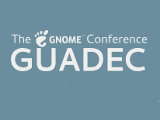Accessibility and the Free Desktop
There are around 285 million visually impaired people in the world, out of which around 38-39 million are completely blind. One interesting fact is that over 15 million of blind people are from India, and similarly a large number is from different developing or undeveloped countries, and poor socioeconomic status. There is a lot of software available for accessibility, and most of it is extremely unaccessible, both economically and socially. This is where Free Software comes in. Free Software desktops, especially GNOME, have made large strides in accessibility in the last few years, and are proving to be an effective way of reaching these people, introducing them to a whole new world of computers.
I'm going to talk about how Free Software enables people to expand upon accessibility software, add regional languages, and helps people in bad socioeconomic settings. I'll then proceed to show a 2-3 minute demo of how the universal access features of GNOME work, and what we need to improve.
